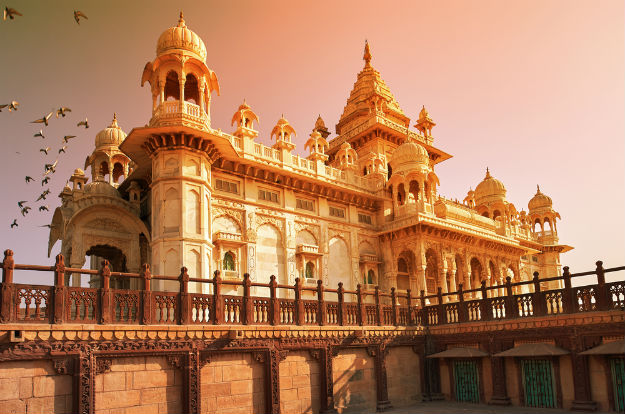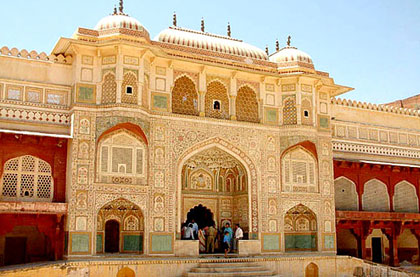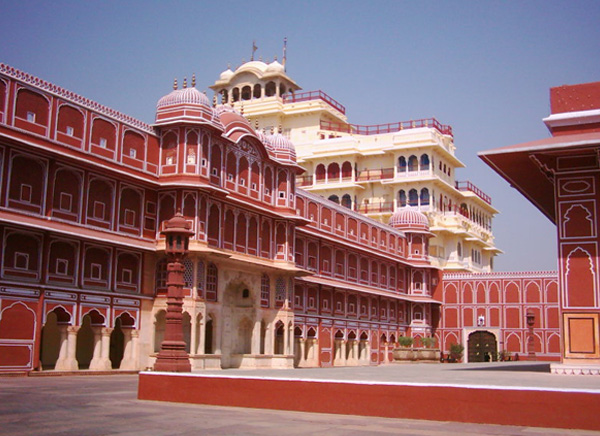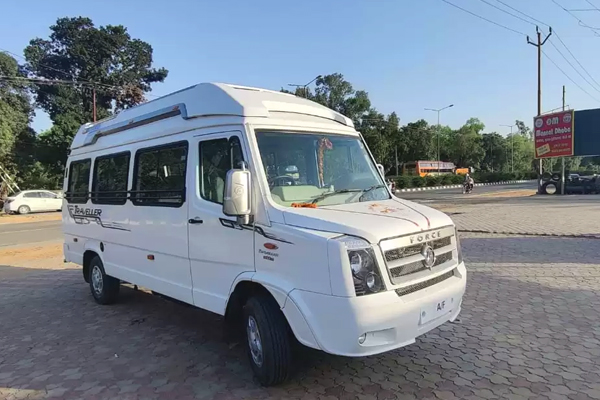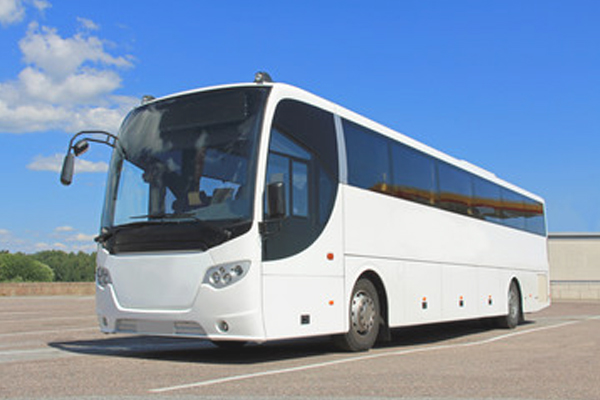North India Rajasthan Tour
Destination :
Delhi – Corbett – Delhi – Mandawa – Bikaner – Pokhran – Jaisalmer – Manvar – Jodhpur – Ranakpur – Udaipur – Chittourgarh – Bijaipur – Ranthambore – Jaipur – Fatehpur Sikri – Agra – Sikandra – Delhi
Highlights:
- As this travel plan is customized one for a private visit, we can adjust the visit and administrations according to your prerequisite.
- A particular necessity, extraordinary intrigue visit, gatherings, course, shopping, national occasions, reasonable and celebrations, meeting with neighborhood individuals, safaris, outing, and dinner plan, convenience and so forth., can be masterminded as needs be at extra expense, assuming any.
- During the National Ceremonies, Major Sports Events, New Year, Christmas, Fair and Festivals the bundle cost can be changed occasionally.
North India Rajasthan Tour
The Rajasthan Village Tour Package of North India will provide a memorable experience of witnessing the unique heritage of "Rajasthan''. Most of the villagers are into traditional work of handicrafts, farming and cottage industries. These individuals live happily on some kind of landscape and appreciate an extraordinary way of life which is most likely in the way of village life. Their way of life, food, clothing, living, traditions, and culture varies from village to village. Most of these exotic villages are located near major cities of Rajasthan. There is no other better way to know about the culture of Rajasthan without visiting its village, with our specially designed Rajasthan Tour Package. The most popular villages of Rajasthan are Mandawa, Mukundgarh, Luni, Fatehpur, Nawalgarh, Dungarpur, Khimsar, Chittorgarh, Bijaipur, Samode, Devgarh, Nimaj, Roht, Kumbhalgarh, Deogarh, Bishnoi Village, Manwar, Ocean, Gajner and many more villages. If you are looking for some more options and broader varieties, have a glimpse of our North India Tour Package.
So check out this detailed travel itinerary of north India Rajasthan tour from Delhi for a wonderful north India tour experience.
1
Day 1: Arrival - Delhi
Welcome on arrival at Indira Gandhi International Airport in Delhi and transfer to pre-booked hotel by air-conditioned car. After check-in, travel documents related to travel planning and services will be handed over to you; Our representative will address all your questions regarding your entire tour plan. Later in the evening, he went to see the Light and Sound Show at the Red Fort. The show showcases an amazing history of the city in a very interesting way. Later, return to the hotel for an overnight stay.
Light and Sound Show: Enjoy a spectacular show at the Red Fort. Which gives the city's 5,000-year-old history alive. Amidst the harmonious panoramic and historical atmosphere of the Red Fort, select episodes of the history of Delhi's historical and majestic past are vividly brought to life. Special effects combine with exceptional character to make the show an impressively memorable experience.
2
Day 2 : Delhi
After having your morning breakfast, take a sightseeing tour of Old Delhi such as: Red Fort, Jama Masjid "India's largest and most magnificent mosque", Rajghat "Memorial of Mahatma Gandhi" where he was cremated. Sightseeing tour continues to visit New Delhi including Rashtrapati Bhavan, India Gate; To honor and pay tribute to the Indian soldiers who sacrificed themselves during the Afghan war, Birla Mandir (Lakshmi Narayan Temple), Humayun's Tomb, Lotus Shaped Bhai's Temple, Qutub Minar; Produced by Qutub-ud-Din Aibak of the Slave Dynasty. Sri Radha Parthasarathy Temple, commonly known as ISKCON Delhi Temple. In the evening you can opt for a cycle rickshaw ride from the vibrant and colorful market of Chandni Chowk. Later, go back to the hotel to rest and relieve your tiredness.
3
Day 3 : Delhi – Corbett (240 kms: 6 hrs)
After breakfast, check out the hotel and drive to Corbett. It is the most popular place, because of its splendid location and abundance of flora. This unique tiger area is considered to be the best, which gave birth to Project Tiger in India to protect the most endangered species and Royal named Tiger of India. On arrival, transfer to Jungle Resort. Evening rest is free for leisure if time permits; You can take a jungle safari or walk through the jungle. Dinner at a forest resort.
Corbett National Park: is the majestic Corbett National Park located in the foothills of the Himalayas. Home to a wide variety of flora and fauna, it is famous for its wild population of leopards. India's first national park and the first sanctuary to fall under Project Tiger, Corbett supports a wide variety of flora making it an ideal habitat for the tiger and its prey. Once a popular hunting ground for the British, this 201 square mile park was named in honor of the late Jim Corbett, the legendary hunter-naturalist who replaced most of his years as a writer and photographer in the area and Contributed to establishing the park.
4
Day 4 : Corbett
In the morning you go for jeep safari at Jhirna Park. The Jhirna Jeep Safari Area is one of the most visited places inside Jim Corbett National Park, the Jhirna Jeep Safari Area is an exciting area that offers tourists some fascinating views of nature and wildlife. After this, return to the hotel for breakfast. After rest and relaxation, a jeep goes for a safari to find the elusive tiger in the Bijrani area of Corbett - now to close the search's eye. Although your jeep passes through the deep jungle, there is a strong possibility of roaming the Royal Bengal Tiger. Keep your cameras ready and capture rare images of tigers and other wildlife species while they are relaxing in their habitat. Corbett Park with its diverse topography, diverse flora, and fauna, the beauty of ravines, the natural splendor of its landscape. Next, return to the hotel for dinner and stay overnight.
5
Day 5 : Corbett – Delhi (240 kms: 6 hrs)
After breakfast check out of the resort and drive to Delhi. On arrival, transfer to the hotel in Delhi. The evening is free for shopping; Delhi is one of the most popular cities for shopping, with ready collections, decorations, food items, beauty products, textiles, wood, silver, bronze art, jewelry and a whole lot more. Famous markets include Central Cottage Industries Emporium, Khadi Gramodyog Bhavan, Khan Market, Old Delhi Market, Chandni Chowk, Spice Market (Khari Baoli), Delhi Haat. Overnight at a hotel in Delhi.
6
Day 6: Delhi – Mandawa (255 kms: 6 hrs)
After breakfast drive to the hotel and Mandawa, stop at Nawalgarh, visit the compact small town of Shekhawati region, which includes beautiful frescoes and forts. A painted arched gateway adorning the city is adorned with Lord Krishna and his cows. Its havelis still bear testimony to the rich Marwari era of the 19th century. Later continue the drive to the medieval city of Mandawa in Rajasthan On arrival, check out a Heritage Hotel. Mandawa is also known as the 'open-air art gallery' of Rajasthan. In the evening you can roam the narrow streets of the local city, see the locals and shops. Enjoy traditional music and dance, live performances by local artists during gala dinner. Overnight at the hotel.
Mandawa: The city was established in the mid-18th century, located in the Shekhawati region in Rajasthan. Mandawa is known for its' speculative Havelis and fortresses. Nowadays, Mandawa is known as a grand mirage-like Fort which is a popular heritage hotel with modern amenities. The structure of this place recalls one of the cultures and traditions that this place used to have in the Golden Age. Thriving and prominent traders and traders built huge Havelis with beautiful wall paintings for the purpose of their accommodation. In times past, the painting theme dominated the themes of mythology, animals, dancers, religion, paintings, displaying local legends, hunting and wrestling scenes, etc.
7
Day 7: Mandawa – Bikaner (190 kms: 5 hrs)
After breakfast visits the city of Mandawa, visiting especially known havelis: Binsidhar Chokhani, Natia, and Gulab Rai Ladia Haveli. Binsidhar Nayatiya Haveli is famous for its curious paintings. Gulab Rai Ladia Haveli is known for its erotic paintings and images, which are now mostly spoiled. These havelis are like museums, many havelis are built by wealthy merchants like in the old days. After checkout and drive to Bikaner. On the way to Deshnok, a world-famous temple known for the Rat Temple, this temple is 600 years old, dedicated to the goddess Karani Mata, the temple built by Raja Ganga Singh of Bikaner, this temple was carved with silver marble. It is and is decorated with marble stones. work. Later, the Bikaner drive continues to reach the hotel. The rest of the evening is free for rest. Overnight at a hotel in Bikaner.
Bikaner: The city was founded by Rao Bikaji in 1488; Rao Bikaji was the son of King Jodhaji of Jodhpur, due to some personal confrontation with his family, he dared to build his own city by adopting desert and wastelands and then he turned into Bikaner, and the city a fascinating city called Raja Bikaji. in the name of. A 500-year-old city with a glorious past is located in the northern part of Rajasthan. Rajput rulers have built magnificent palaces, temples, and forts here that echo the grandeur and images of monsoon clouds in this desert land. The city is decorated with 7 km long walls built in the 18th Sanctuary with 5 huge gates around the city.
8
Day 8: Bikaner – Pokhran – Jaisalmer (330 kms: 7 - 8 hrs)
Today after breakfast visiting the city of Bikaner, visiting the most popular and magnificent Junagadh fort built by Raja Rai Singh, it was never won during the entire history of Bikaner. There are about 37 magnificent palaces within the fort complex, a 7 km wall around the fort and 37 bastions and 2 huge gates. Later drive to the hotel and Jaisalmer, stopping on the way to Pokhran: Visit the huge fort of Pokhran. The city of Pokhran was renamed when India's first nuclear test took place in the 1970s. Pokhran Fort was built in 1532-1584 from yellow sandstone, though not as distinctive as some other forts in Rajasthan, it has some magnificent palaces such as Mangal Niwas, Rani Mahal and Phool Niwas or Phool Mahals; Visit the Pokhran Museum, located inside the complex of the fort, it is quite small and contains weapons, pottery paintings and costumes worn by the Maharajas. After visiting the fort, proceed to Jaisalmer. On arrival transfer to the hotel. Take a walk with the local market to suit the ambience of the city. Overnight at the hotel.
Jaisalmer; The desert city is situated on the edge of the Thar Desert and is one of the most prominent tourist destinations in Rajasthan. Also known as the golden city, Jaisalmer is quite popular for the crowning of the Golden Fort. The city is a fantasy of yellow sandstone established in 1156 AD by Rawla Jaisal, a Rajput king. Jaisalmer is known for its golden-drawn sand dunes, magnificent havelis, thrilling Sam Dunes, Jain temples, picturesque Gadisar Lake and of course, royal heritage and culture. A tour of Rajasthan is incomplete without visiting Jaisalmer
9
Day 9: Jaisalmer
Today a city tour of Jaisalmer city after breakfast, the most popular Golden Fort, also known as Sonar Fort and Jaisalmer Fort, the fort is built on the top of Trikuta hill, which has 99 strongholds, the most speculative feature is the Megh Darbar, and more There are many near the fort, the temples have amazing Havelis made by the rich merchants of the past, especially Nathmal ji's Havel, Patwans' Haveli, Salim Singh's Haveli, Jagged There are splendid mansions with stone and magnificent carvings, which are really facing intricacy. . Later, visit one of the beautiful lake known as 'beautiful Gadisar lake', the entrance of the lake is quite artistic and the story behind this lake is the story of days past. If time allows and you want to cover more places, you can visit the temples of Amar Sagar and Mool Sagar Lake and Ladwara. In the evening drive to Sam Sand Dunes, the closest place to the Thunder Desert, Sam Sand Dunes find golden sprawling sand as the entrance to the Thar Desert. Enjoy a camel ride on the sand dunes. Later, return to the hotel.
Note: Alternatively you can stay at Swiss Tents in Sam Sand Dunes / Khuri Village, enjoying a camel safari in the desert, dinner at the campfire and enjoying folk dances and music by local artists.
10
Day 10: Jaisalmer – Manvar (170 kms: 4 – 5 hrs)
Check out of the hotel after breakfast this morning and drive to Manwar in Devaru. This place falls under the Shergarh region of the Thar Desert and the region has the highest number of sand dunes. Upon arrival at the resort, enjoy a relaxing day. Early evening transfer on camels for a desert safari to Manavar campsite, reaching the campsite by sunset. In the evening, enjoy folk dances and music under the starlight sky, enjoying a theme dinner. Dinner and dinner at the desert resort.
Manwar is an unprecedented tourist destination located in the center of the great Indian Thar Desert which offers a rare opportunity to enjoy the desert life, culture, wildlife and beauty of Rajasthan. The Manwar Resort is spread over 5 acres. Built using local materials and techniques, the resort has 21 well-designed stone cottages, with a balcony, roof terrace, sit-outs in an open-air courtyard, book and gift shop, reading room and a There is a swimming pool. The interiors are designed to be clean and comfortable spaces. Smooth plaster, patterned mosaic flooring, clay colors are paired with customized elements with woven headboards and bedside lamps, furniture and rugs - all of which are very specific to the desert region of Marwar.
11
Day 11: Manvar – Jodhpur (110 kms: 3 – 4 hrs)
In the morning you can opt for a jeep safari to explore the surroundings of the desert village to understand your lifestyle, villagers craftsman, carpenter, metal potter, cobbler. After returning to the resort from village Safari to travel and drive to Jodhpur, visit Bishnoi village. Villagers hailing from the Bishnoi caste are considered as guardians of animals. Bishnois are vegetarians and therefore have great reverence for all living things. Then see local handicrafts ie shoe makers, pottery men in their traditional attire, women with ancestral silver jewelry, en-route watch and photographing beautiful wildlife - blackbuck, chinkara, peacock, etc. Care by local villagers. Later left for Jodhpur. On arrival transfer to the hotel. In the evening you can choose to explore the local market by visiting various authentic restaurants. You can choose an open-air restaurant with Rajasthani hospitality offering authentic food and folk music and dance. Later, return to the hotel.
Jodhpur: Rajput's home, (Rathore) - the terrible city of Rajasthan. 1459 AD by Rao Jodha. Established in today, Jodhpur is one of the largest and prosperous city of Rajasthan, which is known as the white city of Rajasthan. Jodhpur was once the capital of the Marwar state (northern part of Rajasthan). The old Taj Mahal, the fort of Mehrangarh, is a major tourist attraction of Jodhpur. Another pride of Jodhpur is Umaid Bhawan Palace; This grand palace has now been converted into a heritage hotel and the current residence of the royal family of Jodhpur.
12
Day 12: Jodhpur – Ranakpur – Udaipur (257 kms: 6-7 hrs)
After breakfast, visit the Clock Tower, the towering Mehrangarh Fort, the magnificent Jaswant Thada (Tomb of the great Rajput king: Jaswant Singh), Umaid Bhawan Palace and Museum - one of the largest and regal palaces in India to visit the city. . . Later get out of the hotel and drive to Udaipur, en route at Ranakpur takes a halt, visit the ancient Jain temples built in the 12th century, you can choose to enjoy lunch at the Queen's Daughter: ( On its own) an authentic heritage hotel. After the journey, the drive to Udaipur continues. On arrival check into the hotel. In the evening enjoy a boat ride in Lake Pichola; You can choose your own dinner at the Lake Palace Hotel, located in the middle of the lake. Later, return to the hotel to stay.
Udaipur: One of the most romantic and beautiful cities in North India, the city was founded by Rajput king Uday Singh in 1568 AD. Situated on the banks of the shimmering Pichola Lake, it is one of the most romantic cities in Rajasthan. Udaipur is located in the lush Aravalli mountain range. It is a kaleidoscope of amazing lakes, enchanting temples, lake gardens, amazing forts and palaces and the narrow lanes of the old city, with a historical past characterized by the poise and valor of Udaipur, Rajput kings, who spent years and valor on this city And ruled chivalry
13
Day 13: Udaipur
After breakfast, take a sightseeing tour of Udaipur visiting one of the important landmarks of the city - the Miracle City Palace complex. The palace is a magnificent white marble historical house of Rajput rulers. Here you will see notable places like Durbar Hall, Palace Museum, Crystal Gallery and Jagdish Temple, followed by Saheliyan Bari, a beautiful amusement garden for the princes of rulers and queens. The Indian Folk Arts Board is an ethnic display of Rajasthan's traditions and culture, ethnic ornaments are traditional outfits, puppets, masks, dolls, classical paintings, guna musical instruments. For a sightseeing tour of the ancient Eklingji and Nagda temples, visit the 22 km lake Begela Lake in the evening. Overnight at the hotel.
14
Day 14: Udaipur – Chittourgarh – Bijaipur (160 kms: 4 hrs)
After having breakfast, check out the hotel and drive to Bijaipur. En Route visits the city of Chittorgarh to visit India's most powerful and largest historical fort: Chittorgarh echoes with stories of romance and valor for the Rajput tradition. A ruins bastion, where the royal past resides in its surrounding forts, beautiful palaces and magnificent chhatris surrounding the fort, the Kirti Stambha, Rana-Kumbha Palace, Padmini Palace, Meera Temple and Kumbh Shyam Temple and Kalika Mata Temple, State Archaeological Site Museum. Later on, arrival at the palace Biapur, proceed to Bijipur — an original palace where the royal family of Bijipur still lives. This 16th-century palace is situated in the Nirmal Vindhyanchal ranges. This fort resonates with the sound of many fierce battles of historical importance fought against the Mughals and Marathas. Dinner drinks are served in a lawn or old courtyard, under a skylight in a sky unpublished by city lights. Traditional Indian music and dance fill the garden. The 'Queen of the Night' fragrance of the night flowers is replaced by the aroma of the soon-to-be-served fragrance. Dinner and dinner at Bijaipur.
Chittorgarh, the city is known for its huge fort, situated on a 6 km long hill, covering an area of 280 hectares with fortifications, temples, towers, and palaces. The city may be singled out for its illustrious past and valor, unique to the Rajput tradition. Chittorgarh is a Garhwali settlement, which has a history of many sieges but refused to bow down to foreign invaders. Tales of Princess Padmini are known here for her elegance and beauty. A ruins bastion, where the royal past resides in its grand forts and palaces
Castle Bijipur is a 16th-century palace situated in the serene Vindhyachal ranges in the Mewar region, near Chittorgarh (Rajasthan, India), built by Rao Shakti Singhji, the younger brother of the great warrior Maharana Pratap. A wildlife sanctuary adjacent to the palace has leopard, chinkara, spotted and four-horned deer, crocodiles and wild boar as well as a variety of birds. Jeep and camel safaris, trekking and camping, visiting the nearby Panagarh Fort and boating and fishing in its lotus lake, and local tribal folk songs in the evening are other activities here.
15
Day 15: Bijaipur – Ranthambore (295 kms: 6 hrs)
Get out of the hotel after breakfast this morning and drive to Ranthambore. Shifting to the jungle resort, one of Jaipur's royal family's hunting ground and one of India's finest tiger reserves. The evening is free for personal activities. Dinner and overnight stay.
Ranthambore, known as one of the finest wildlife spots in India, was established as a sanctuary in 1959 and was included in the first phase of Project Tiger in 1972. The park derives its name from Ranthambore Fort, which is situated on a rocky outpost. Forest. The fort dates back to the 11th century when it was an important stronghold for control of Central India. Though overgrown by vegetation, remains of summer palaces, temples and guard stones still exist within the fort. Earlier, the Ranthambore Park, once patronized by the Maharajas of Jaipur, was once the scene of royal hunting parties. This place is very famous for the tigers here and is the best place to see the kings of the jungle and these majestic poachers. Tigers can also be seen frequently during the day, busy with their normal activities - especially for chasing or hunting and taking care of their young.
16
Day 16: Ranthambore
After breakfast, take a jungle safari with an open canter to explore the Ranthambore Wildlife Sanctuary with a natural expert, one of the best places in India to see tigers in their natural habitat. In the dry season, tigers can be seen near water holes and are clearly visible in the dry forest. You will like the valley at first sight. It is situated on the border of Ranthambore National Park. Leopards survive in the dense forest due to tiger dominance. You can have a wonderful time going in jeep safaris and seeing various wild animals including deer, wild boar, and sloth bears. Return to the hotel for lunch. Later visit Ranthambore Fort with a view of National Park and Jogi Mahal. Also, visit the famous temple of Ganesh in the fort. Later return to the forest resort for dinner and a night's stay.
17
Day 17: Ranthambore – Jaipur (190 kms: 4 hrs)
After breakfast this morning, visit the hotel and Jaipur. Enroute visits a step-son located in the village of Abhaneri near Jaipur; It was built by King Chanda of the Chauhan dynasty and was dedicated to Hashat Mata, the goddess of joy and happiness, to complete it. Later, continue the drive to Jaipur. On arrival transfer to the hotel. Jaipur is world-famous for handmade carpets for hand-woven carpets, precious stones, handicrafts, stones, textiles, blue pottery, many others. After refreshments, enjoy your evening at the most authentic and ethnic village resort: Chokhi Dhani, which is built on the theme of an ethnic village in Rajasthan with entertainment such as folk dances, puppet shows, astrology, music, camel rides. There are a lot of traditional environments as well. Here you can enjoy traditional Rajasthani food. Later, return to the hotel for a night's stay.
Jaipur is known as the 'Pink City' of India. The walls, houses, and buildings of the entire city were washed with pink for the grand and royal reception of Britain's Prince Albert and Queen Victoria, who in 1853 AD. I visited Jaipur. This magnificent city was founded in 1727 AD. Took place in The greatest ruler Jai Singh II. Jaipur is surrounded by hills on three sides. Jaipur is the only city in the world, built according to Hindu architectural science called Shilpa Shastra. The city was designed in a rectangular shape of 9 blocks, depicting 9 divisions of the universe.
18
Day 18: Jaipur
After breakfast this morning, take a tour of the Pink City to have a spectacular view of the Amber Fort located outside the city, built in the 15th century by Rajput Raja Man Singh. Later visit another powerful and majestic Nahargarh Fort close to Amber Fort. Drive back to the main city to visit the Imperial City Palace - the current residence of the royal family of Jaipur. The incredible Jantar Mantar was built and built by Raja Raja Jai Jai Singh. The magnificent Hawa Mahal is also known as the 'B Palace of Winds Birla Mandir' with its white shimmering marble glow at night. You can visit the fort of Amber to watch a light and sound show: one holds the history of the citadel, which is pulsed with 600 years of the Kachhwaha dynasty and an old past of 28 kings before their capital moved to Jaipur Has gone. Later you can stop on a cycle rickshaw ride and explore the bustling market. Later, return to the hotel for a night's stay.
19
Day 19: Jaipur – Fatehpur Sikri – Agra (240 kms: 5 hrs)
After breakfast, this morning, get out of the hotel and walk towards Agra. Prohibited entry into Fatehpur Sikri, the old uninhabited city of the Mughal Empire, built of red sandstone in honor of Saint Salim Chishti, who gave birth to 3 sons to Emperor Akbar. This is an example of strong stability combined with originality. Each important structure here represents a type in itself. Notable among them is Diwan A Khas; Panch Mahal, Salim Chishti's Tomb and Buland Darwaza, one of the largest and largest gateways in the world. After the trip… arrive at Agra, transfer to the hotel. Must visit Oswal Emporium in the evening, it took artists 10 years to build this artistic symbol to see the replica of the Taj Mahal, as well as enjoy the light and sound show "Mohabbat-the-Taj: Pyar Ki Saga" The only one of its kind show in India! Return to hotel for overnight.
Agra is famous as one of the seven wonders of the world - the Taj Mahal. A pleasant city with a comparatively slow pace, Agra is an old city and is said to have a jungle, which derives from a forest mentioned in the Mahabharata. The city is also famous for its gold thread embroidery, leather shoes, and carpets. Both Agra and Fatehpur Sikri are conveniently located close to Delhi. Agra Fort, Sikandra, Ram Bagh, and Itmad-ud-Daula are some notable places besides the famous Taj Mahal.
20
Day 20: Agra
The world's most popular and beautiful monument in the morning: the Taj Mahal with its magnificent view at sunrise. The Taj Mahal is an example of a wonderful and very beautiful architectural monument which is one of the 7 wonders of the world. This historical work depicts the fusion of diverse architectural styles. The Taj Mahal is the crown of all the lovely buildings in the world and a symbol of eternal love. We will carry forward this journey while traveling to Agra Fort. The fort was built in 1576 AD by the great Mughal emperor Akbar, which was structured and designed with red-stone barricades; Here you will find the magnificent Pearl Mosque and various other excellent examples of art: Jahangir Mahal, Moti Masjid, Machhi Bhawan, Nagina Mosque, Diwan-e-Khas, Sheesh Mahal, Diwan-e-Aam and Meena Bazar and Musaman Bhurj. Emperor Shah Jahan imprisoned his rebellious son Aurangzeb at Musaman Bhurj, he would show his love through the Taj Mahal, where his beloved wife was cremated. Later, visit the mausoleum of Itmad-ud-Daula, 35 km from Agra, 35 km from Agra, a memorial to his great father. Later returned to the hotel for a night's stay.
21
Day 21: Agra – Sikandra – Delhi (230 kms: 5 hrs)
After breakfast this morning, get out of the hotel and drive towards Delhi. Mausoleum of the Mughal Emperor Akbar, a spectacularly designed structure of Hindu and Muslim architecture, while stopping en route at Sikandra to see the Mausoleum of the Mughal Emperor Akbar. Later proceed to Delhi, arrival at the airport to board the flight scheduled for the onward journey, concluding the journey with pleasant memories.
| INCLUDED |
|
||||||||||
| NOT INCLUDED |
|


